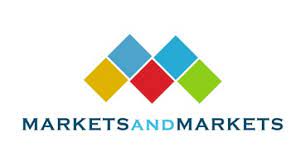When the coronavirus pandemic spread, it disrupted all industries, with some hit harder than others. Fortunately, some industries (or segments of industries) are actually experiencing a significant upturn as a result of the pandemic that will help them thrive. One such industry is the paint and coatings industry.
As countless people stayed home during 2020, they had the time to focus on household projects. There was also a major uptick in relocations, as indefinite work-from-home arrangements increased flexibility. As restrictions began to lift, delayed construction projects were renewed, further accelerating the focus on home improvements. As a result, many manufacturers in the paint and coating industry are experiencing a growing demand, putting them in a unique position where demand is far greater than supply.
One of the most significant factors contributing to this issue is the disruption experienced in the supply chain. The industry has no choice but to contend with extreme supply chain challenges. The good thing is that manufacturers have a lot to learn from these difficulties. This will help them meet the growing and continuous demand, and help prevent similar challenges from happening in the future.
How COVID-19 Disrupted the Supply Chain in Paint and Coatings
The COVID-19 pandemic led to a number of challenges across the supply chain. For instance, manufacturers have to contend with the following supply chain issues:
- A lack of global resilience as they continue to break down in the face of multi-country interruptions
- Inability to meet stakeholders' expectations for sustainability
- A lack of flexibility, which tampers with the industry's demand to meet customer demands for personalization and customization
- High costs of operations
- Talent gaps across the supply chain, creating dependency on the human workforce
- Over-reliance on legacy technologies
The adverse effects of the breakdown on businesses might extend beyond 2021. However, there is great hope that the paint and coatings market will overcome the shock across the forecast period. After all, the situation is more of a result from an unprecedented event with drastic consequences than fundamental weakness in the market, industry or global economy.
The Importance of Communicating Clearly with Your Suppliers
Even if it’s unlikely that we’ll see another supply chain disruption of such magnitude in the near future, it’s still important to strengthen your relationship with suppliers to prevent issues like shortages in the future. Communication is crucial for the success of the supply chain. Yet, it represents one of the biggest areas in need of constant improvement in all types of businesses. Many procurement professionals across the board admit internal communications can be challenging. Communication with other stakeholders outside the organization, especially suppliers, becomes even more difficult. Yet, the importance of communication within the supply chain cannot be downplayed.
It all comes down to the fact that proper communication between stakeholders and external suppliers facilitates more creative ideas, improving the process. People involved in the process can suggest improvements based on their firsthand experiences, which can support a better-managed process. If communication is limited, it interferes with the ability of the procurement department to influence the entire supply chain process.
Strategies for Navigating Supply Chain Issues
The success of the supply chain depends on its management. Proper supply chain management (SCM) helps in streamlining all the steps from procuring raw materials to creating the final products. It's a streamlined approach that seeks to provide value to the customer.
Supply chain management establishes a strong communication relationship with suppliers, reduces shipment delays, and helps avoid shipment delays and logistical errors. With the right strategy in place, supply chain management also gives manufacturers negotiating power for the best rates and products in the shortest time. Subsequently, it reduces inventory costs and improves the overall planning and operations efficiency.
Consistently and effectively managing all of your suppliers can be challenging. Here are a few strategies that can help.
Leverage New Technologies
The technology a business has in place plays a huge role in making or breaking its supply chain management. Supply chain management software helps a company remain compliant by using supplier portals instead of spreadsheets. With such a strategy in place, a company can easily track, document and evaluate its supply chain management effectiveness over time. Overall, such software also reduces tedious manual tasks required by spreadsheets.
With the right technology in place, companies can eliminate labor-intensive intervention and speed up the decision-making process. A technology-driven supply chain plays a significant role in helping companies achieve a competitive advantage by providing ongoing visibility into every area of the supply chain.
Work with Dependable Suppliers
Finding suitable suppliers is another crucial factor for business. The cost is not the only thing to look at in this case. More importantly, it helps to work with reliable suppliers to allow a company to fulfill its responsibility in delivering quality services to customers.
Finding suppliers with a strong reputation for high-quality standards calls for thorough research. They also should be responsible and dependable in areas such as customer care and general operations. When searching for reputable suppliers, you’ll also want to assess their risk level. This means checking their supplier behavior, including how they mitigate or handle issues. It also helps to check their qualifications or certifications.
Pursue Continuous Improvement
An integral part of having a stable supply chain is to continuously monitor and evaluate the performance of your suppliers as well as your internal supplier management program. As such, businesses need to keep looking for ways to be innovative and to improve their operations. This way, they can accrue higher-cost benefits and deliver the best customer service standards.
How to Maintain Strong Ongoing Communication with Suppliers
In looking beyond the immediate threat that faces the supply chain, companies need to make adjustments to secure their future. One thing they must do is maintain strong communication with suppliers. If they are to tackle the communication problem, procurement professionals must:
- Prioritize stakeholders and suppliers. It helps to assess the role stakeholders and suppliers play in an organization and determine how supportive they are. They should, for example, think of the consequences that can arise if suppliers stopped supplying to the business.
- Ensure your business tracks the performance of suppliers actively and scrutinizes new suppliers thoroughly before onboarding them.
- In case of any changes, ensure you communicate them to suppliers immediately. Use the right communication tool to minimize any gaps. Basic principles to consider in communication include personalization of the message and clarity.
Final Thoughts
The impact of the COVID-19 pandemic on businesses is inevitable. However, if manufacturers understand how to navigate the challenges, they stand to benefit despite the ongoing hardships. There are many lessons they can learn from the situation, including how to uphold proper communication in the supply chain.
They also must reimagine the architecture of the supply chain, build transparency and resilience, and leverage a digital supply chain. Finally, companies must innovate with their customers in mind through a truly sustainable supply chain.







Report Abusive Comment